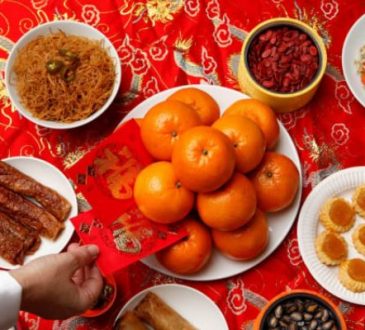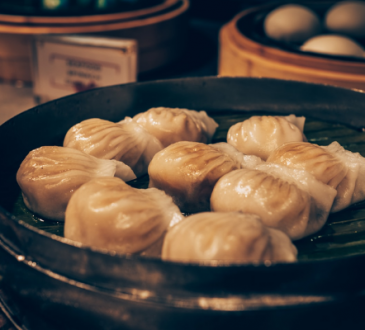Savoring the Diversity of Chinese Cuisine: Chinese food with dim sum
Chinese cuisine is renowned worldwide for its rich flavors, diverse ingredients, and intricate cooking techniques. Among its many culinary treasures, dim sum stands out as a quintessential dining experience. Originating from the Cantonese region of China, dim sum has evolved into a beloved tradition celebrated not only in China but also in Chinese communities around the globe. In this culinary exploration, we delve into the world of dim sum, uncovering its history, significance, and the delightful array of dishes that make it a cherished part of Chinese culinary heritage.
Contents
Origins and Significance of Dim Sum:

The origins of dim sum can be traced back to the teahouses along the ancient Silk Road in China, where weary travelers sought refreshment and sustenance. Initially, dim sum consisted of simple snacks served alongside tea, offering travelers a moment of respite during their arduous journeys. Over time, these humble offerings evolved into a culinary tradition characterized by bite-sized delicacies, intricate flavors, and communal dining.
Dim sum holds great cultural significance in Chinese cuisine, symbolizing the spirit of togetherness and the joy of sharing a meal with loved ones. Traditionally enjoyed during yum cha, a Cantonese term meaning “drinking tea,” dim sum is more than just food—it’s a social ritual that fosters bonds among family and friends. Gathering around a table laden with steaming baskets of dumplings and savory treats, diners engage in lively conversation, laughter, and the simple pleasure of savoring delicious food together.
The Art of Dim Sum Making:
At the heart of dim sum lies the artistry and skill of its preparation. Mastering the craft of dim sum making requires years of training and a deep understanding of traditional cooking techniques. From the delicate folds of a dumpling wrapper to the precise timing of steaming or frying, every step in the process is a testament to the dedication and expertise of the chefs.
One of the most distinctive features of dim sum is its wide variety of dishes, ranging from steamed, fried, and baked to sweet and savory offerings. Each dish showcases a unique combination of flavors and textures, carefully balanced to tantalize the palate. From classic favorites like steamed shrimp dumplings (har gow) and pork siu mai to more adventurous creations like turnip cake (lo bak go) and chicken feet, dim sum offers something to suit every taste preference.
Exploring the Dim Sum Menu:

As diners peruse the extensive dim sum menu, they are greeted with a tantalizing array of options, each offering a glimpse into the culinary heritage of China. Let’s embark on a culinary journey through some of the most beloved and iconic dim sum dishes:
- Har Gow (Shrimp Dumplings): Delicate and translucent, har gow are a hallmark of Cantonese dim sum. Made with a thin, translucent wrapper encasing plump shrimp filling, these dumplings are steamed to perfection, allowing the natural sweetness of the shrimp to shine through.
- Siu Mai (Pork Dumplings): Another dim sum classic, siu mai are open-faced dumplings filled with a savory mixture of ground pork, shrimp, and aromatic seasonings. Topped with a vibrant orange dot of crab roe or diced carrot, siu mai are as visually appealing as they are delicious.
- Char Siu Bao (Barbecue Pork Buns): Soft and pillowy steamed buns filled with tender, sweet-savory barbecue pork, char siu bao are a comfort food favorite. Whether enjoyed as a savory snack or as part of a dim sum feast, these fluffy buns never fail to satisfy.
- Lo Bak Go (Turnip Cake): A savory delight made from shredded turnip, Chinese sausage, and dried shrimp, lo bak go is steamed, sliced, and pan-fried to crispy perfection. With its irresistible combination of textures and flavors, this dish is a must-try for dim sum aficionados.
- Cheung Fun (Rice Noodle Rolls): Thin, delicate rice noodle rolls filled with savory ingredients such as shrimp, barbecue pork, or crispy fried dough, cheung fun are a staple of Cantonese dim sum. Served with a drizzle of soy sauce or hoisin sauce, these silky rolls are a delight to the senses.
- Egg Tarts: A sweet ending to any dim sum meal, egg tarts are flaky pastry shells filled with a creamy, custard-like filling. With their golden-brown crusts and luscious centers, these delectable treats are a testament to the artistry of Chinese pastry-making.
- Chicken Feet: A dish that may challenge the palates of the uninitiated, chicken feet are braised until tender and then simmered in a flavorful sauce of black bean, garlic, and chili. While the idea of eating chicken feet may seem unconventional to some, those who dare to try are rewarded with a rich, flavorful experience.
Beyond the Menu:

Dim Sum Customs and Etiquette: In addition to its delectable dishes, dim sum is steeped in a rich tapestry of customs and etiquette that enhance the dining experience. As diners navigate the bustling atmosphere of a dim sum restaurant, they are invited to partake in age-old traditions that add depth and meaning to the meal.
One such tradition is the ritual of pouring tea, which plays a central role in the dim sum experience. According to tradition, the youngest member of the dining party assumes the role of tea pourer, filling the cups of their elders as a sign of respect. This act of filial piety underscores the importance of family bonds and intergenerational harmony in Chinese culture.
Another custom is the practice of using chopsticks and small serving utensils to share dishes communally. Rather than ordering individual portions, diners select a variety of dishes to share with the table, fostering a sense of camaraderie and conviviality. This communal style of dining encourages diners to sample a diverse array of flavors and textures, enhancing the overall dining experience.
Conclusion:
In the realm of Chinese cuisine, dim sum reigns supreme as a culinary tradition that delights the senses and nourishes the soul. From its humble origins as a roadside snack to its status as a beloved cultural institution, dim sum has captivated the hearts and palates of food enthusiasts around the world. As we celebrate the artistry, diversity, and communal spirit of dim sum, we honor not only the rich culinary heritage of China but also the timeless joy of sharing a meal with loved ones. So, gather your friends and family, pour a cup of tea, and embark on a culinary journey through the tantalizing world of dim sum.



